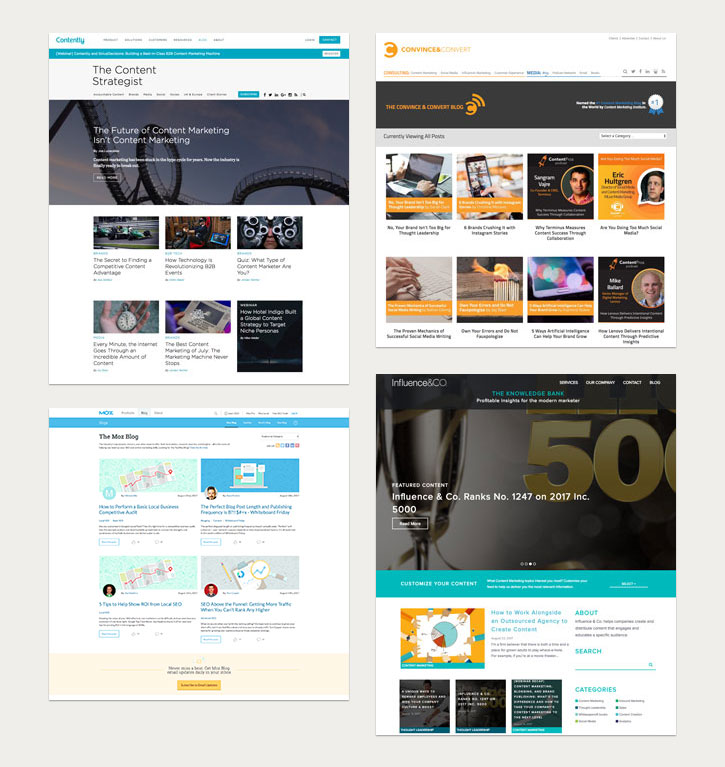
In the digital marketing field, blogging holds a pivotal role. It not only boosts your lead generation and search ranking efforts but also serves as a platform for your voice, a gateway to your community, and a facilitator of communication with the world.
However, the effectiveness of your blog isn't solely dependent on the quality of your content. The layout of your blog plays a significant role in capturing and retaining your audience's attention.
Let's discuss the two primary blog layout strategies - list view and grid view. We'll compare their pros and cons, provide three strategies for each, and discuss when to hide or show dates and authors.
List-style blog layouts and grid-style layouts impact user experience, each having unique advantages and potential drawbacks. List-style layouts are linear or chronological, allowing readers to focus on one piece of content at a time. This reduces distractions and makes it easier to guide them towards deeper content and a call to action.
On the other hand, grid-style layouts present multiple pieces of content simultaneously, potentially increasing overall content consumption. This layout can be visually appealing and provide readers with a broader overview of the blog's content. However, it can be overwhelming when done poorly.

1. Maintain a Clear Narrative: Each article should lead the reader towards a specific action, whether that's downloading a resource, subscribing to a newsletter, or clicking through to another related piece of content. High-quality images, engaging headlines, and concise, insightful text can all help to attract and retain readers' attention.
2. Show Dates and Authors for Timely Content: If your blog posts are time-sensitive or if the author's reputation and expertise are important to your audience, showing dates and authors can add credibility and context to your posts.
3. Hide Dates for Evergreen Content: For content that remains relevant over time, hiding dates can prevent your posts from appearing outdated. This can be particularly useful for blogs that don't post frequently.

1. Create a Cohesive Visual Overview: Consistent formatting, colour schemes, and headline sizes can help to create a unified aesthetic. It's also important to ensure that each piece of content is still compelling in its own right, with clear headlines and engaging preview text.
2. Use Images Strategically: Images play a crucial role in grid layouts, so choose them carefully. They should be visually appealing, relevant to the content, and consistent in style.
3. Show Authors for Personal Blogs: If your blog is personal or when different authors write on varying topics, showing the author's name and photo can help readers find the content that's most relevant to them.
In both cases, it's important to keep your audience and objectives in mind when choosing a layout. A list-style layout might be more effective for a blog focused on lead generation, while a grid-style layout might be better suited to a blog aiming to maximize content consumption.
Whether you prefer a list-style layout or a grid-style layout, the key is to keep your audience and your objectives in mind and to use the strategies that best support those objectives.
We hope this article has given you a deeper understanding of blog layout strategies and inspired you to experiment with different approaches. Remember, there's no one-size-fits-all solution. The best layout for your blog is the one that works best for your audience and your content.